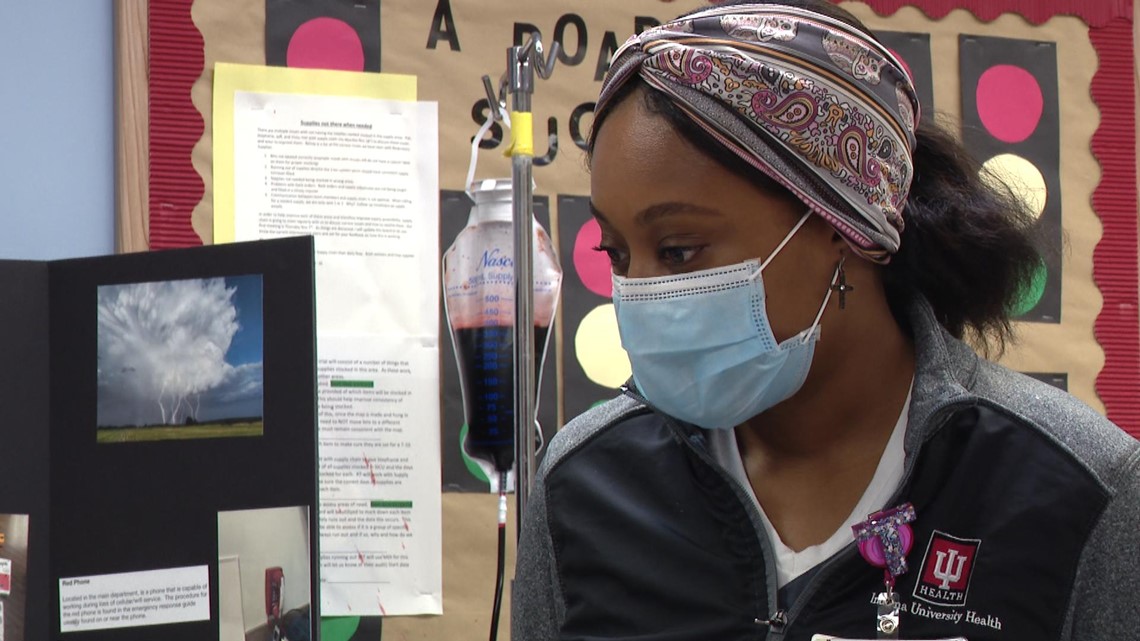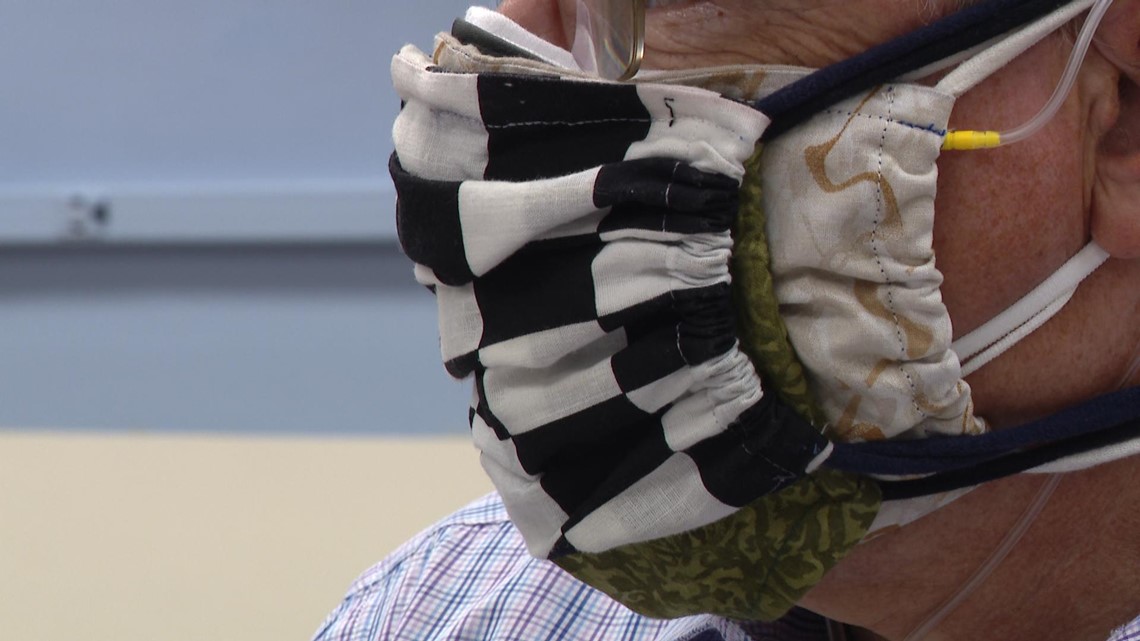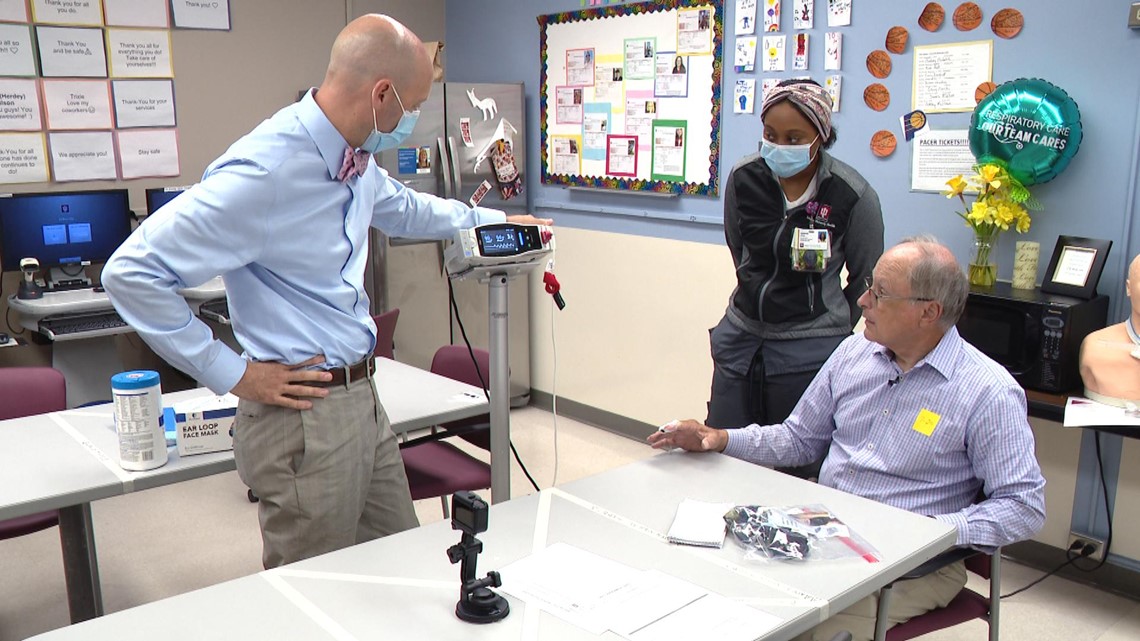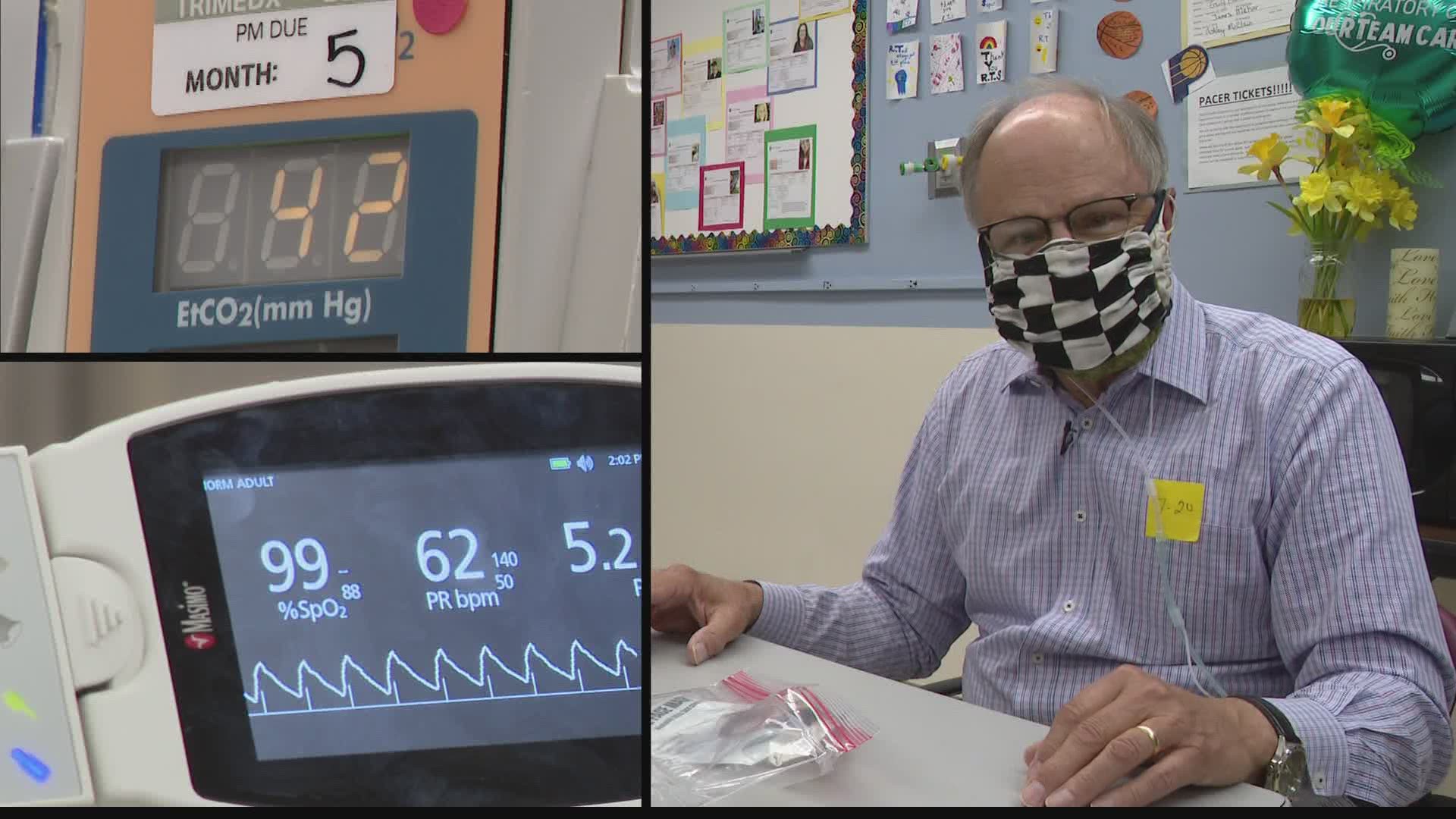INDIANAPOLIS — Opponents of face masks have a long list of reasons for refusing to wear them. Some claim the masks are endangering their health. Keelin James said she’s required to wear a mask at work but doesn’t wear one anywhere else.
“I think we are not getting enough oxygen.” James said, “We are constantly breathing in what we are breathing out.”
Can that be true?
THE QUESTION
Are paper and cloth somehow depriving our bodies of essential oxygen and causing carbon dioxide to reach dangerously high levels?
THE EXPERIMENT
To get some answers. we brought a handful of masks to the Respiratory Care Clinic at IU Health.
Terran Newby, a respiratory therapist, agreed to help us out.
“It will not hurt,” Newby said as she fastened a sensor to one of my fingers. It measures the amount oxygen in my blood. A funny looking piece of plastic tubing measures the amount of carbon dioxide exhaled from my lungs.


First, we checked the numbers when I wasn’t wearing a mask.
“Ninety-nine percent oxygen,” said Dr. Gabriel Bosslet. He’s a pulmonary and critical care specialist. “You got a heart and it’s working well.”
Carbon dioxide registered 36 points. “36 - is this normal, good or bad?" I asked. ”Normal is 35 to 45,” answered Newby. “So yes you are normal.”
For the VERIFY experiment, we were going to monitor the carbon dioxide and oxygen levels as we stacked multiple masks on top of each other.
THE RESULTS


Mask number one is a widely used, standard disposable mask.
Thirty seconds later with the mask on, my oxygen level was unchanged at 99%. My carbon dioxide level nudged up a point.
Mask #2 is an inexpensive cloth mask I purchased at a local drug store. After putting it on, my blood oxygen and carbon dioxide levels remained normal.
Mask #3 is made from two layers of cloth. The carbon dioxide level didn’t change. The amount of oxygen in my blood actually improved slightly to 99%.
So, I added another cloth mask, the fourth one in our basic experiment.
“It is starting to feel as if I am not getting as much air as I was before.” I said. But the numbers were still well within the normal ranges. So I’m fine.
Mask #5, a checkered black and white one sewn by my wife, Juli, was appropriate to take our experiment to the finish line.


“I will admit this is uncomfortable. It feels like someone has a hand across my face,” I said though all the cloth and paper.
Newby kept watching the numbers. And they made me feel better.
My carbon dioxide level peaked at 42 points, then dropped to 39. Remember, Newby said 35-to-45 is "normal."
The oxygen level registered 98 percent, then 99 percent.
Even while breathing through five masks, there was just as much oxygen in my blood and only slightly more carbon dioxide in my lungs than when I wasn’t wearing a mask.
THE CONCLUSION
Dr. Bosslet wasn’t surprised.


“Our experiment showed that a normal person with normal lung function could literally wear five masks and go around all day long.”
Dr. Bosslet admitted he hates wearing a mask. “I do not like not seeing people smile. I don’t like being unable to read non-verbal cues,” he explained. “But if my kids are going to go so school this fall, this is one of the things we can do.”
Bosslet’s patients are fighting serious lung diseases and must wear face masks. Some find the masks unbearably suffocating and claustrophobic. His prescription is both simple and difficult. “Slow yourself down. Take some deep breaths,” he said, “Repeat to yourself, 'Everything is OK.'”
For some, putting a mask over their face requires overcoming fears and putting mind over matter. Our experiment proved they are safe.

